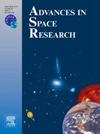Assessment of vegetation indices for mapping burned areas using a deep learning method and a comprehensive forest fire dataset from Landsat collection
IF 2.8
3区 地球科学
Q2 ASTRONOMY & ASTROPHYSICS
引用次数: 0
Abstract
Forested areas, crucial for their multifunctional roles, face significant risks from wildfires. Recent methods have enabled accurate delineation of burned areas (BA) using satellite images, which is essential for assessing impacts and recovery. Nevertheless, many such techniques rely on short time series for training data and utilize many predictors without thorough analysis of efficient computational frameworks. Therefore, this paper presents a novel method that builds a forest fire dataset while minimizing technical and technological costs, while also assessing the benefits of incorporating vegetation spectral indices (VIs) versus specific spectral bands in a Convolutional Neural Network (CNN) detector. The methodology involves creating a dataset of real forest fires from 1985 to 2021 using two consecutive Landsat images and applying VIs and unsupervised clustering techniques. The dataset is then used to explore the feasibility of integrating VIs from single-temporal Landsat images into a U-Net-based CNN, measuring performance across multiple settings. A real dataset was successfully acquired, achieving a 73.68 % level of agreement with the limited years available in the Spanish Ministry’s official records, while the analysis of the introduction of VIs into a CNN revealed that using single-temporal images with the Landsat blue band and VIs achieved a 73 % Intersection over Union (IoU) metric, leading to a 46 % reduction in storage requirements. In contrast, using the green band with the blue band and VIs resulted in a 75 % IoU and a 31 % reduction in storage, comparable to configurations using visible and infrared bands without VIs. Consequently, this methodology successfully collects a dataset of BA from wildfires, extending the digitized time scale while demonstrating the advantages of applying VIs, rather than specific spectral bands, in a CNN for delineating burned areas, achieving data optimization and normalization.
求助全文
约1分钟内获得全文
求助全文
来源期刊

Advances in Space Research
地学天文-地球科学综合
CiteScore
5.20
自引率
11.50%
发文量
800
审稿时长
5.8 months
期刊介绍:
The COSPAR publication Advances in Space Research (ASR) is an open journal covering all areas of space research including: space studies of the Earth''s surface, meteorology, climate, the Earth-Moon system, planets and small bodies of the solar system, upper atmospheres, ionospheres and magnetospheres of the Earth and planets including reference atmospheres, space plasmas in the solar system, astrophysics from space, materials sciences in space, fundamental physics in space, space debris, space weather, Earth observations of space phenomena, etc.
NB: Please note that manuscripts related to life sciences as related to space are no more accepted for submission to Advances in Space Research. Such manuscripts should now be submitted to the new COSPAR Journal Life Sciences in Space Research (LSSR).
All submissions are reviewed by two scientists in the field. COSPAR is an interdisciplinary scientific organization concerned with the progress of space research on an international scale. Operating under the rules of ICSU, COSPAR ignores political considerations and considers all questions solely from the scientific viewpoint.
 求助内容:
求助内容: 应助结果提醒方式:
应助结果提醒方式:


